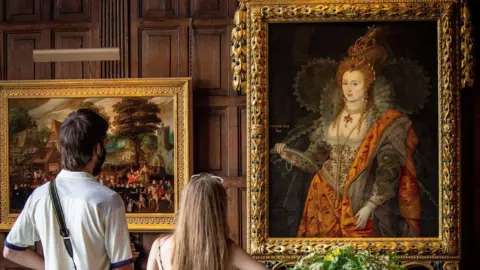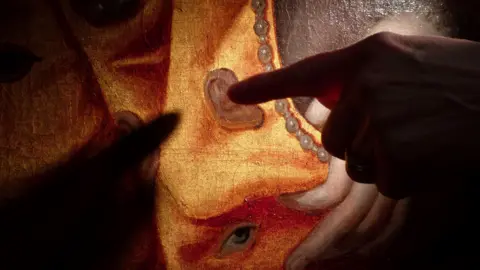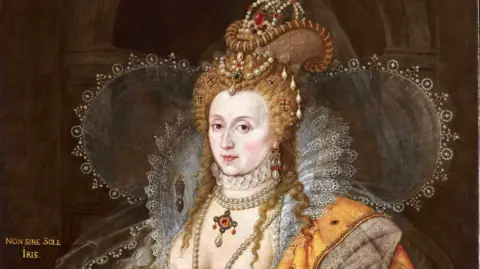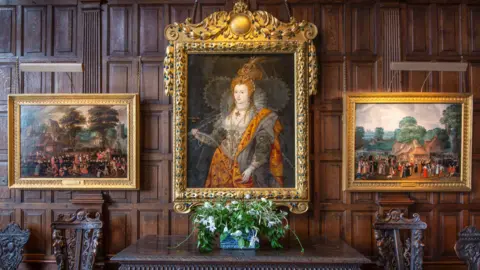Rainbow Portrait back after 'meticulous' conservation
 Hatfield Park
Hatfield ParkA portrait of Elizabeth I has returned to the wall of a stately home after more than a year of meticulous conservation and study.
The Rainbow Portrait is believed to have been initially exhibited in Hatfield House, Hertfordshire, when it was built in 1611.
It depicts the Virgin Queen clutching a rainbow in place of the more traditional sceptre common in royal portraits, a spokesperson for the estate said.
Vannis Jones Rahi, head of archives and collections, said: "It is probably the most iconic piece in our collections and the focal point of the Marble Hall so its loss was certainly felt during conservation – the House feels complete once again."
It is thought to be the last portrait painted of the queen during her lifetime, or very shortly after her death in 1603.
The portrait was removed in 2022 to be shown in two exhibitions in the USA, before it was taken to the Courtauld Institute of Art in June 2023.
The "meticulous conservation" process, carried out by Nicole Ryder, involved an entire clean, with minor losses corrected - before it was X-rayed and certain pigments were analysed.
 Hatfield Park
Hatfield Park Nicole Ryder
Nicole RyderIt is thought The Rainbow Portrait was painted between 1600 and 1603 - but the identity of the artist is a mystery.
It has been attributed to Federico Zuccaro, Isaac Oliver, and Nicholas Hilliard, but the most likely candidates are Marcus Gheeraerts the Younger - or John de Critz.
Inscribed above the rainbow in Latin are the words "Non sine sole iris", meaning "no rainbow without the sun".
'Hidden elements'
Ms Jones Rahi added: "This portrait of Elizabeth is enigmatic because there is so much that is still unknown surrounding the painting’s purpose and creation and so much rich symbolism that can be interpreted differently through so many different lenses."
The rejuvenation had revealed "elements that have been hidden over time", she said.
But the House could not disclose exactly what was discovered during the conservation process, ahead of an event on 20 September.
 Hatfield Park
Hatfield ParkFollow Beds, Herts and Bucks news on BBC Sounds, Facebook, Instagram and X.
